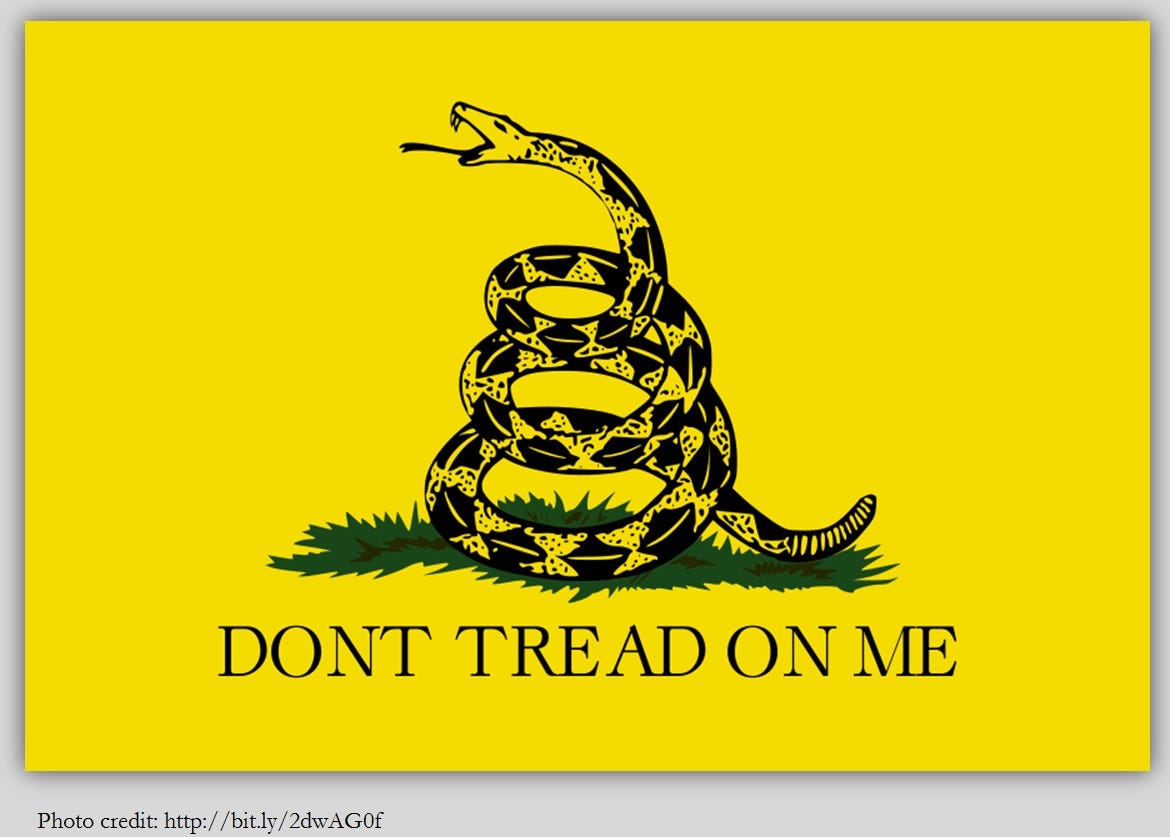TDIH: The Sam Adams of the South
You may not know this Patriot’s full name, but you have certainly seen the flag named after him. That flag was a yellow field with a coiled snake and the words “Don’t Tread on Me” emblazoned across t
On this day in 1724, the “Sam Adams of the South” is born. You may not know this Patriot’s full name, but you have certainly seen the flag named after him.
Christopher Gadsden was nothing if not a fiery patriot. He was among the first to see the need for a declaration of independence. He led the Sons of Liberty in Charleston, S.C., and he rallied his fellow citizens to oppose the Stamp Act passed by the British Parliament. In 1766, he wrote a column in the South-Carolina Gazette and Country Journal. At the head of his column, in bold letters, was the phrase “Aut mors aut libertas”—Liberty or Death!
Patrick Henry’s use of the phrase would popularize the expression, later. But Gadsden used it earlier.
ndeed, one early historian of the American Revolution, David Ramsay, spoke of the “decisive genius of Christopher Gadsden in the south, and of John Adams in the north.” If that genius had prevailed, Ramsay noted, then perhaps separation from England would have occurred earlier than it did.
Gadsden served in the first Continental Congresses in 1774 through 1776. During that time, he served on the Naval Committee (later renamed the Marine Committee). He is credited with designing a personal standard for Esek Hopkins, the commander of the Continental Navy fleet.
You guessed it! That flag was a yellow field with a coiled snake and the words “Don’t Tread on Me” emblazoned across the bottom.
Historian E. Stanly Godbold describes the meaning of the snake: “The snake had long been a political symbol in America; at the time of the Albany Congress in 1754 Benjamin Franklin had drawn a disconnected serpent and given it the caption, ‘Join or Die.’ The coiled, threatening rattlesnake in 1775 was a symbol of the unity that the colonies had achieved. . . . [The rattlesnake] attacked only in self-defense but was always deadly. No more fitting symbol could have been found to express the mood of the Continental Congress.”
Later, Gadsden was taken prisoner when the British laid siege to Charleston in 1780. He was held in solitary confinement for 42 weeks. He was eventually freed, but his health suffered. It must have been pretty bad. He was elected Governor upon his return, but he had to decline due to his physical condition.
Gadsden did serve in public office again on at least one notable occasion. He was a member of the South Carolina convention that ratified the Constitution.
You have to wonder how he felt on that day. He’d spent literally decades working and sacrificing for our country. First, he’d worked to convince his fellow colonists that independence was the only solution. Then he’d fought and risked his life for that very same freedom—he was even imprisoned. And now, there he was, casting his vote to lay the foundation for a new country and a new government.
Wow!
Sources can always be found on my website, here.



So much sacrifice was made for the freedom we’ve been blessed with. We must never allow it to be taken away!
Christopher Gadsden would likely be pleased that his "Don't treason me" flag or as it is still now commonly known as the Gadsden flag remains a strong symbol of liberty. God bless people like Mr. Gadsden and may God continue to bless the United States of America. Thank you Tara.